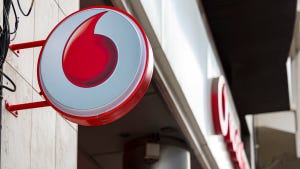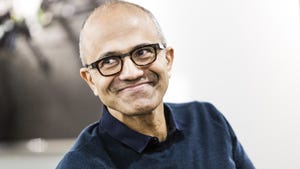Verizon embraces 'open RAN' messaging
Verizon said it now has 130,000 radios in its network capable of using open RAN (O-RAN) specifications. The company has previously framed its efforts in the context of virtualized RAN (V-RAN) technology.

Verizon said it now has 130,000 radios in its network capable of using open RAN (O-RAN) specifications. The company's announcement comes just weeks after rival AT&T announced a five-year, $14 billion agreement with vendor Ericsson for radio access network (RAN) equipment supporting O-RAN standards.
"Verizon is fully supportive of O-RAN technology and is focused on commercializing an operationally sound O-RAN architecture," Adam Koeppe, SVP of technology planning at Verizon, said in a release. "Our commitment to developing O-RAN standards and to deploying compliant equipment in our active Radio Access Network is helping to drive the industry forward which will result in a variety of tangible benefits for our customers who expect leading-edge technology from Verizon."
The company's announcement Monday builds on years of statements from Verizon about its efforts to deploy virtualized software functions supporting the O-RAN Alliance's specifications into its network. But it also signals a new tactic by Verizon to better position the company within the open RAN discussion. The company has previously framed its efforts in the context of virtualized RAN (V-RAN) technology.
According to Silverlinings, Samsung is providing most of Verizon's open RAN radios, but Ericsson is also on board. Verizon has shifted away from Nokia as a vendor.
The details
In its latest announcement, Verizon said its move to V-RAN technology involves the development of a "cloud native, container-based, virtualized architecture." That kind of software-based architecture "creates the foundation for O-RAN. Verizon's V-RAN efforts run in parallel with and overlap open RAN efforts," Verizon said. Verizon added that O-RAN will allow it to "introduce new competition and innovation into the RAN ecosystem."
Finally, Verizon said that its 130,000 O-RAN-capable radios also include an undisclosed number of massive MIMO radios. That's noteworthy considering Verizon's networking chief Joe Russo in November said that open RAN is not yet mature enough to handle massive MIMO.
"If I look at look at the performance of the O-RAN at this point, it can't do the kind of things like massive MIMO at 16T/16R [to] 64T/64R, those kind of performance measures, we're just not there yet," Russo said at an investor event. "And until we are, it doesn't have a place necessarily in the kind of performance that I want to deliver to my customers."
Tracking Verizon's progress
Regardless, Verizon has made no secret of its efforts to shift to virtualized, open RAN equipment. For example, Koeppe told Light Reading in 2021 the operator's 5G hardware vendors – Ericsson, Samsung and Nokia – would begin supplying open RAN-compliant equipment starting in 2021. The company confirmed that deployment started in 2022.
Then, later, in 2022, Verizon said it had deployed over 8,000 virtualized cell sites, with a goal of deploying over 20,000 by the end of 2025. In that announcement, Verizon also said the move created "the foundation for O-RAN." By 2023, Verizon said its virtualized cell site count had increased to 15,000.
Verizon's newest announcement – of 130,000 O-RAN capable radios – likely reflects the fact that each of its virtualized cell sites includes a handful of radios.
Single-supplier O-RAN
There's an ongoing debate in the 5G industry over whether single-supplier open RAN deployments represent a step forward. After all, open RAN is intended to allow operators to mix and match equipment from a variety of vendors. For example, officials with open RAN proponent Mavenir have warned against "a single supplier position" in open RAN.
On social media, analyst Patrick Lopez with Core Analysis wrote that AT&T's move to open RAN only counts in instances where Ericsson's equipment is integrated with Fujitsu's radios.
Others take a different perspective. For example, Dell'Oro Group said last year that Verizon's ongoing open RAN deployment helped to push the open RAN trend forward in the US. Verizon "is ordering 7.2x compatible radios from one of its vendors, but the carrier is waiting to fully deploy open RAN," the firm wrote at the time.
Verizon's Koeppe addressed the question with SDxCentral. "What we know works is a single supplier O-RAN, meaning it's one supplier for the baseband and the radio following the O-RAN spec. We know that works, and that's good. We've seen a lot of progress there," Koeppe told the publication last month. "What we need to prove can be highly effective and reliable is a multivendor O-RAN deployment, meaning I've got a different supplier for the baseband and different supplier for the radio using that open O-RAN interface to work in a high-traffic environment, high-quality environment."
Mavenir, for its part, isn't completely against the notion of single-supplier O-RAN. For example, the vendor is the end-to-end provider for Paradise Mobile in Bermuda.
Moving to standalone 5G
Open RAN isn't the only thing happening in Verizon's network. The company is also slowly making progress in deploying the standalone (SA) version of 5G.
Koeppe told SDxCentral that the carrier now has a 5G SA core supporting commercial traffic. That's noteworthy, considering Verizon's Russo said in November that the operator does not yet have any commercial traffic traveling over its 5G standalone core. "We have it in trials only at this point," he said at the time.
Verizon is far behind its original timeline to move to SA 5G. In the summer of 2020, Verizon said it would begin moving traffic onto its standalone 5G core "in the second half of 2020 with full commercialization in 2021."
Mobile World Live reported that Ericsson, Casa Systems, Oracle and Nokia supply Verizon's 5G core.
About the Author(s)
You May Also Like












